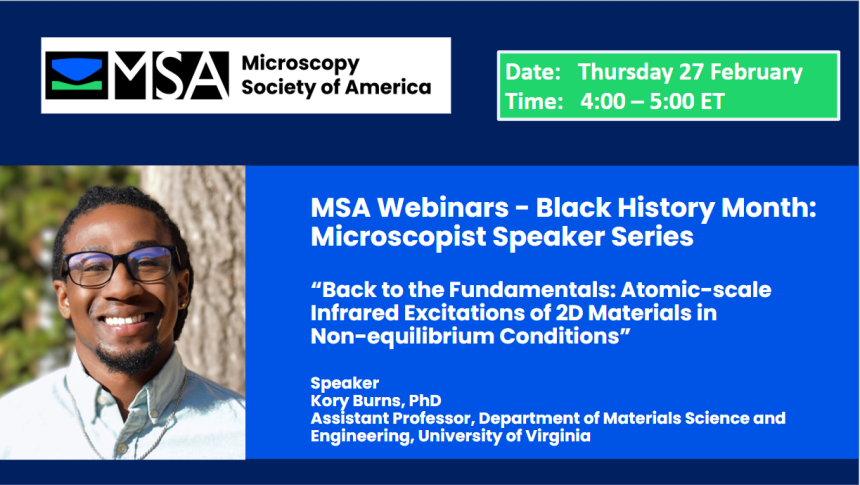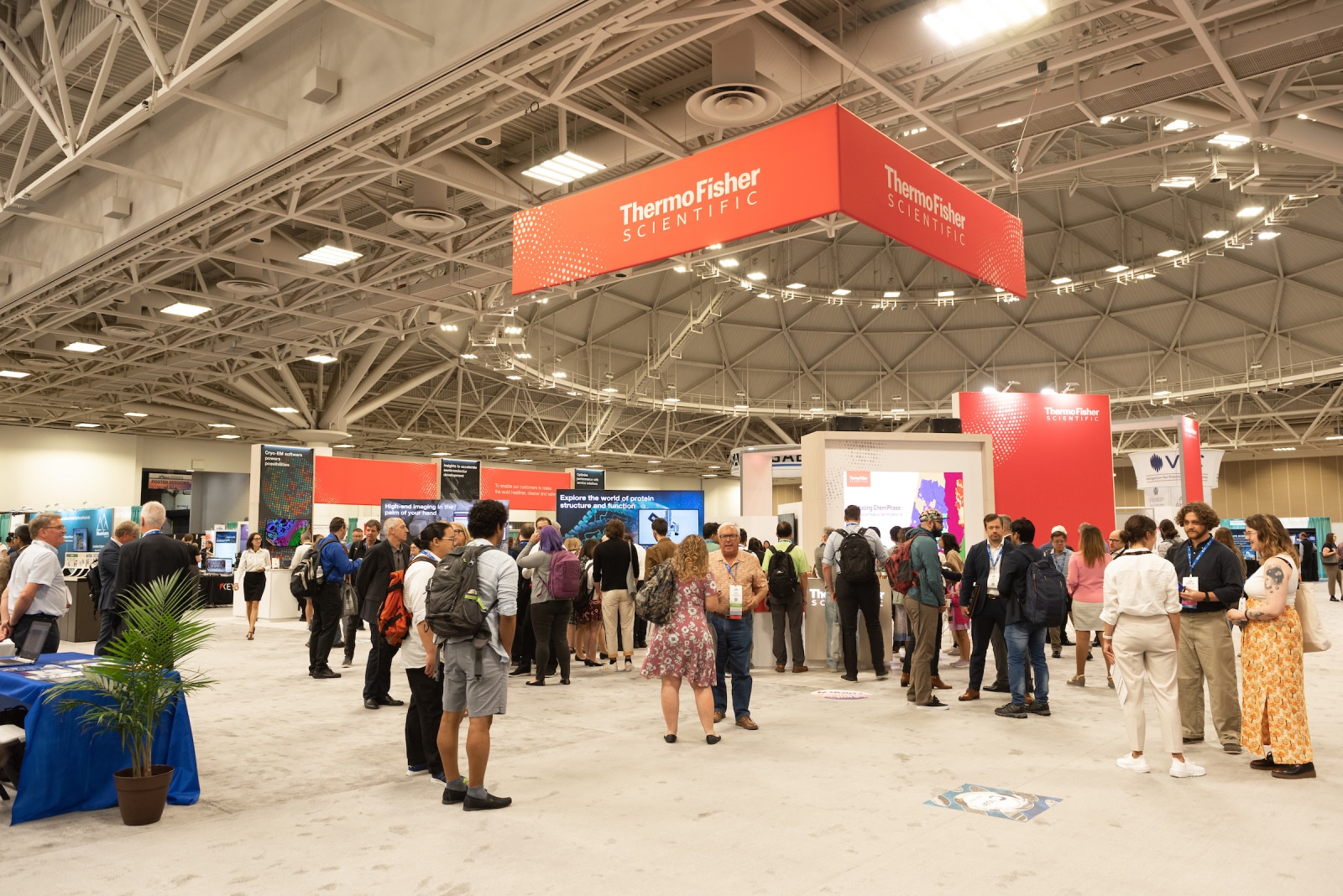Upcoming Annual Meetings (M&M)
M&M 2026
August 2 - 6, 2026
Milwaukee, WI
M&M 2027
August 1 - 5, 2027
Pittsburgh, PA
M&M 2028
July 30 - August 3, 2028
Seattle, WA
Interested in submitting an event to the MSA Event Calendar? Use our submission form!

MSA Webinars Black History Month - Back to the Fundamentals - Atomic-scale Infrared Excitations of 2D Materials in Non-equilibri
- Price: FREE
In the materials science landscape, we are often imagining enumerations of atom positions and relative stoichiometries desired to achieve any desired functionality for a particular application. Unfortunately, manipulating materials at the atomic scale, and measuring the impact of individual anomalies in the lattice has proven to be a daunting task. The problem is twofold: (1) inserting atoms uniformly at the scale of device architectures is limited by the tools currently available, and (2) we traditionally measure the spectroscopic signature of semiconductors with optical probes, which has a spot size far too large to measure local heterogeneities. Now, with the exponential advancements in ion accelerators and the monochromation of electron beams, the stars are aligned for a breakthrough.
In this talk, a range of electron energy loss spectroscopy (EELS) techniques are used to collect the chemical, optical, and vibrational signal of van der Waals (vdW) and non-vdW two-dimensional materials. First, we use aberration-corrected scanning transmission electron microscopy (STEM) to resolve the atom species and local ordering of the solid. Next, we demonstrate the ability of single-atom EELS in beam-sensitive materials to resolve individual impurities and dopants in 2D materials. Then, we migrate to the low-loss region to demonstrate how indirect and direct band transitions are resolved in vdW solids around vacancies, impurities, and edges. Last, by correcting our entrance and exit slit aberrations to near perfection, phonon modes are resolved at atomic resolution. This is accompanied by advanced techniques like off-axis EELS so neutron-selection rules dominate our acquisition to produce a localized signal and suppress long-range modes, and momentum-resolved EELS for mapping phononic density of states. Ultimately, this work not only pushes boundaries in electron microscopy and the single-atom design of materials, but provides avenues to the entire scientific landscape on decoupling the structure-processing-property relationship in solids for the better and more efficient design of next-generation nanoelectronics.
About the speaker:
Kory Burns is an assistant professor in the Department of Materials Science and Engineering at the University of Virginia. He obtained his PhD in materials science and engineering (Nuclear Engineering program) at the University of Florida in 2022. While in pursuit of his PhD, Kory held multiple positions at external institutions, including the National Energy Technology Laboratory, Oak Ridge National Laboratory, Texas Instruments Inc., and Sandia National Laboratories. His research group focuses on radiation-solid interactions, analytical TEM, in situ TEM, and image processing. So far in his first year in the job, Prof. Burns has been awarded the NASA VSGC Young Investigator Award, 4-VA Collaborative Research Award, UVa Research Innovation Award, UVa Community Outreach and Engagement Award, and has been a part of teams selected for funding from the Department of Energy, Department of Defense, and the National Science Foundation. Aside from research, he was proudly elected as a board representative of the distinguished 100 Black Men of Central Virginia, he is the faculty advisor of collegiate 100, a board member of Guide Outreach, and facilitator between the Department of Human Services and the school of engineering and applied sciences (SEAS) at the University of Virginia.
ORCID: Kory Burns https://orcid.org/0000-0001-5801-9909
Start Date & Time
Thu, Feb 27, 2025, 4:00 PM ET
End Date & Time
Thu, Feb 27, 2025, 5:00 PM ET
Location
Zoom Webinar
